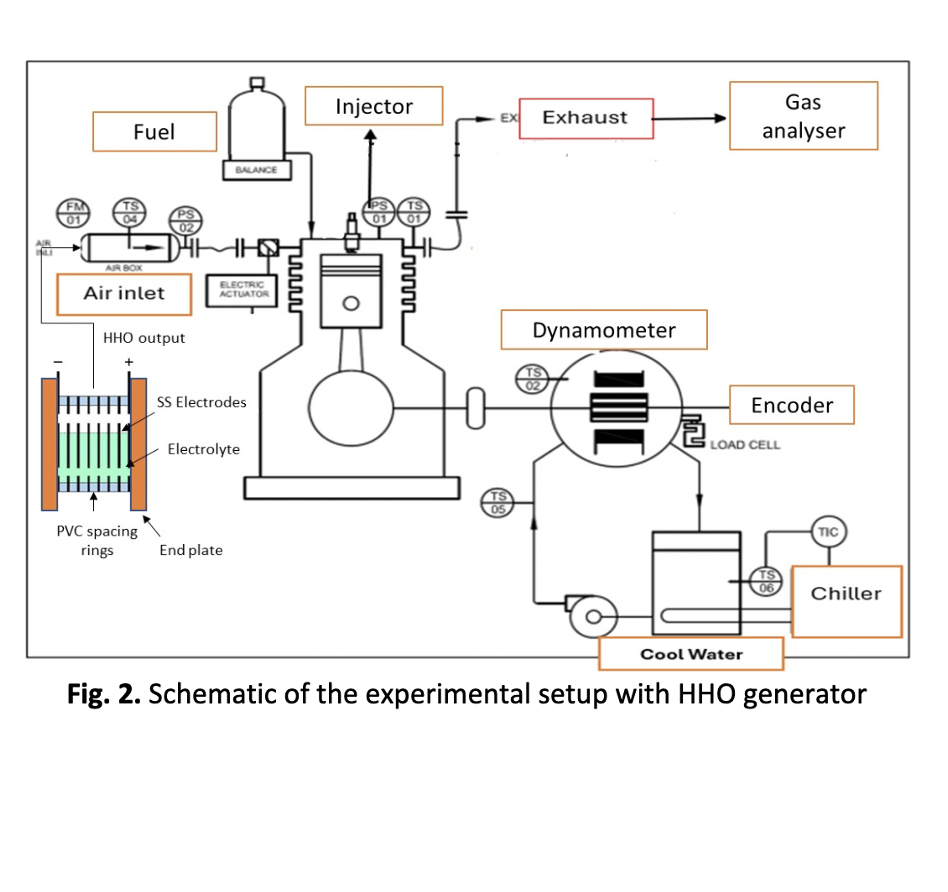Diesel and Oxyhydrogen Dual-Fuel: Reducing Emissions of a Diesel Engine using Diesel-Oxyhydrogen Dual Fuel Combustion
DOI:
https://doi.org/10.37934/arefmht.18.1.6980Keywords:
Diesel-HHO dual fuel, emissions reduction, HHO production, hydrogen fuelAbstract
Diesel engines are frequently used because of their high efficiency and durability. However, they are also known for emitting high amounts of pollutants, including CO2, CO, NOx and particulate matter. Current studies have focused on alternate fuel techniques to reduce these emissions. An effective method involves using oxyhydrogen (HHO) with diesel and biodiesel can increase combustion efficiency and minimize harmful emissions. Additionally, HHO serves as a viable alternative to hydrogen, especially considering the current challenges in global hydrogen production and storage, which may not be sufficient to meet the increasing demand for transportation applications. Hence, the current study investigated the effect of using a diesel-HHO dual fuel on the emission characteristics of a single-cylinder, four-stroke diesel engine. The engine was operated at a constant speed of 1500 rpm and was tested under varying loads of 0%, 50% and 75%, with diesel (D100) serving as the primary fuel and HHO gas as the inducted fuel. The HHO gas, produced at a constant flow rate of 0.80 LPM through alkaline water electrolysis was continuously injected into the combustion chamber through air suction manifold. The results revealed that compared to diesel fuel, the injection of HHO has increased the CO2 emissions by 23.08, 23.81 and 20.0% at an engine load of 0, 50 and 100%. The CO emissions were reduced by 23.53, 34.78 and 41.38% at 0, 50 and 100% engine load. Similarly, the HC emissions were reduced by 26.09, 23.08 and 23.33% at 0, 50 and 100% engine load. The NOx emissions were increased by 25.0, 10.53 and 4.17% at 0, 50 and 100% engine load. Overall, introducing HHO has increased the CO2 and NOx emissions as the hydrogen and additional oxygen in the HHO gas promote more complete combustion and higher combustion temperatures. However, this enhancement in combustion efficiency has resulted in a significant reduction in CO and HC emissions.
Downloads























